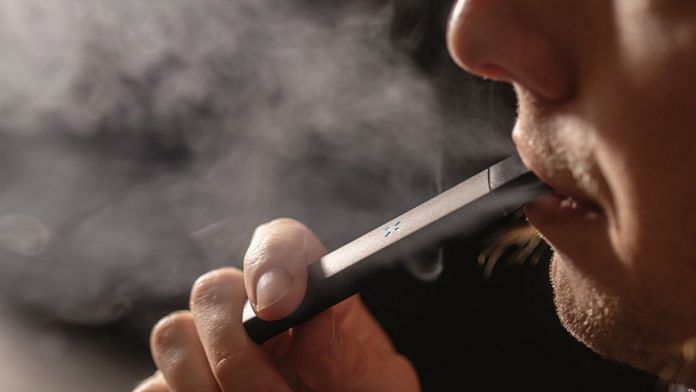Walmart is ready to stop selling e-cigarettes. The administration of President Donald Trump is moving to ban flavored e-cigarettes and nicotine pods. Opponents of vaping cheer these developments. Supporters are dumbstruck. “Idiocy of the highest order, responding to a fake crisis manufactured by the media,” is how a Washington Examiner op-ed put it.
Both sides are adding more heat than light.
There’s certainly a problem, and it isn’t fake. It needs to be confronted and solved. But that doesn’t mean it’s time to go all the way to sweeping bans.
The Centers for Disease Control and Prevention reported last week that the number of people with lung illnesses related to e-cigarette use has increased to more than 500. An eighth person died last week. According to the CDC, 72% of those afflicted are male, 16% are under the age of 19, and 67 per cent are between 18 and 34. The mysterious illnesses have been reported in 38 states.
At the same time, e-cigarette use among high school students is soaring. In 2019, an astonishing 28 per cent of students reported having vaped in the past 30 days, according to a government survey. That’s up from 21 per cent in 2018 and 12 per cent in 2017.
What should be done? First, acknowledge that the illnesses and deaths are a serious problem without a known cause. Most — but not all — of those who have fallen ill used black-market vaping pods containing tetrahydrocannabinol, the psychoactive ingredient in marijuana. If public health officials eventually determine that the illnesses are caused by illicit THC-related products, then any regulation on legal nicotine e-cigarettes should be lighter.
Second, keep in mind that the long-term health effects of vaping are largely unknown. The current atmosphere of panic is not rooted in evidence about the effects of prolonged use.
And third, set aside the recent wave of acute illnesses and deaths and focus on the stunning increase in vaping among teenagers. This alone is a public health concern that requires a policy response. The problem is that overly restrictive efforts to reduce vaping among children are likely to reduce vaping among adults. This would drive adults who are addicted to nicotine back to cigarettes. The challenge of addressing vaping is that what’s good for kids could easily harm adults.
A big worry about the rise in youth vaping is that it might increase their tobacco use. But e-cigarette use has not reversed the long-standing decline in their tobacco-smoking rate. In 2011, 16 per cent of high school students reported smoking a tobacco cigarette in the past month. In 2019, the rate was down to 6 per cent.
The harm and toll from smoking tobacco cigarettes seems to have gotten lost in the alarm over vaping. According to the CDC, traditional cigarette use is responsible for 480,000 deaths per year. That is roughly equal to the population of Miami. Over 16 million Americans live with a smoking-related disease. By comparison, nearly 11 million U.S. adults vape. Eliminating flavored e-cigarettes will drive many of them back to inhaling the carcinogens present in tobacco smoke. Some adults, not just kids, choose to vape because of the fruit and candy flavors the government seeks to ban.
A better response to youth vaping would be more incremental. Regulate the amount of nicotine in flavored e-cigarettes to make them less harmful and addictive to children, whose nicotine use might begin with vaping, while still preserving them as an option for adults trying to quit smoking. Raise the age for purchasing cigarettes — tobacco and electronic — to 21. Put in place a more aggressive marketing campaign to discourage youth vaping. Crack down on stores that illegally sell vapes to children. Do a better job at regulating advertising to make sure it doesn’t target kids. Investigate and prosecute the black-market products that seem to be at the heart of the recent wave of illnesses and deaths.
Before banning them, consider increasing taxes on e-cigarettes to discourage their use among children. And continue studying the health effects of vaping. If the evidence proves the critics right, more severe action might be justified.
What about the response of private businesses, like Walmart Inc.? They should do whatever they think is in their interest, as they define it. But they are not advancing public health by declining to sell e-cigarettes while continuing to sell the tobacco cigarettes that are responsible for hundreds of thousands of deaths each year.
So let’s step back and gather perspective. There is good reason to be concerned about e-cigarette use among teenagers, and adopting reasonable measures to stop kids from vaping is prudent. The U.S. should see whether those more modest steps bear fruit before pulling flavored e-cigarettes off the shelves, closing the door on an innovation that could potentially save millions of lives and advance public health by providing an off-ramp to smokers. – Bloomberg
Also read: Opioid use and vaping show medical community’s failure to respect addiction as a disease



